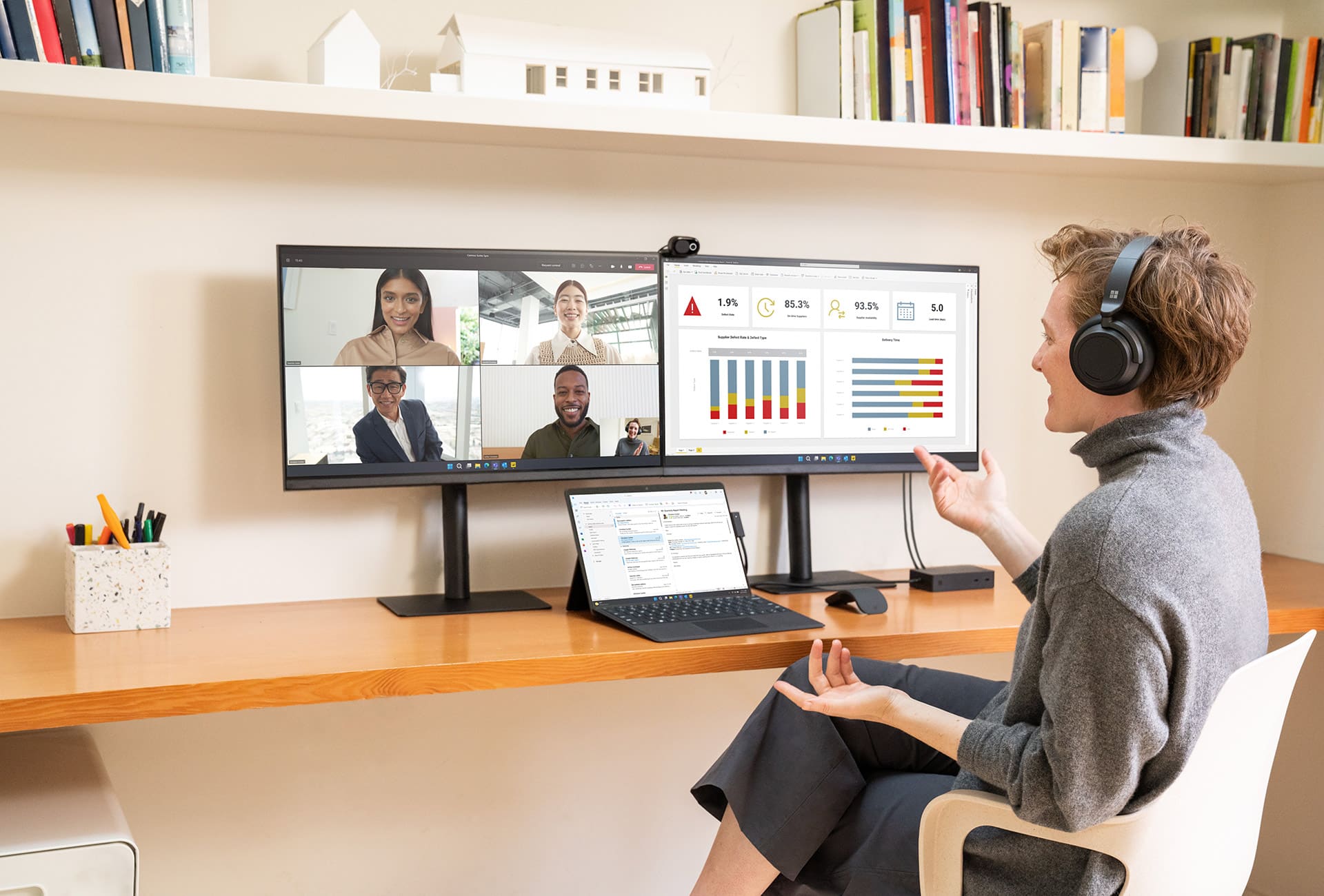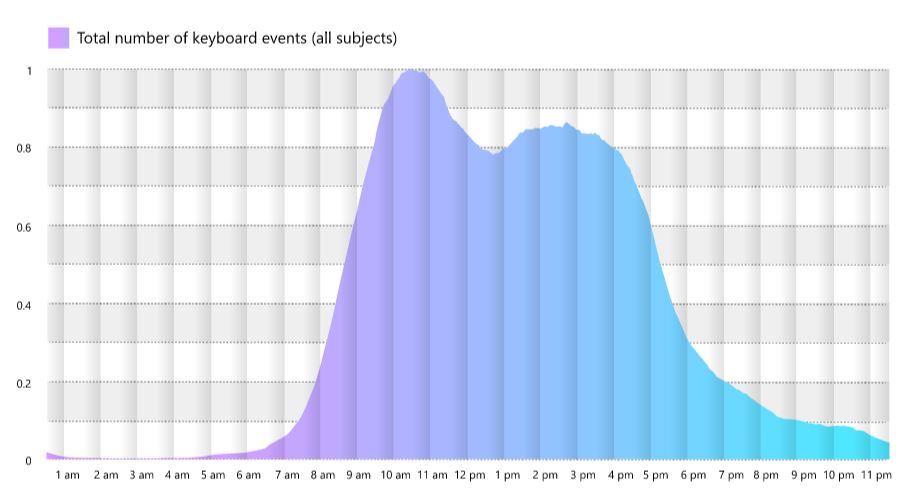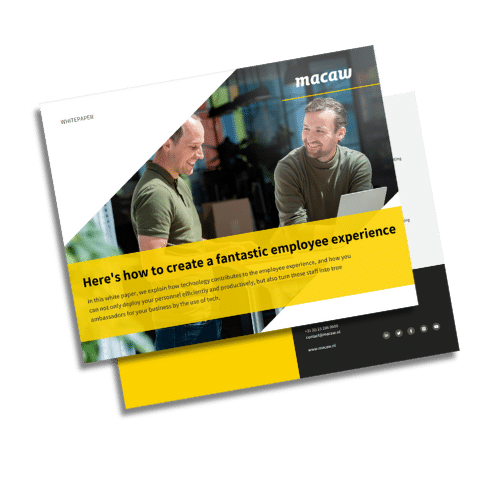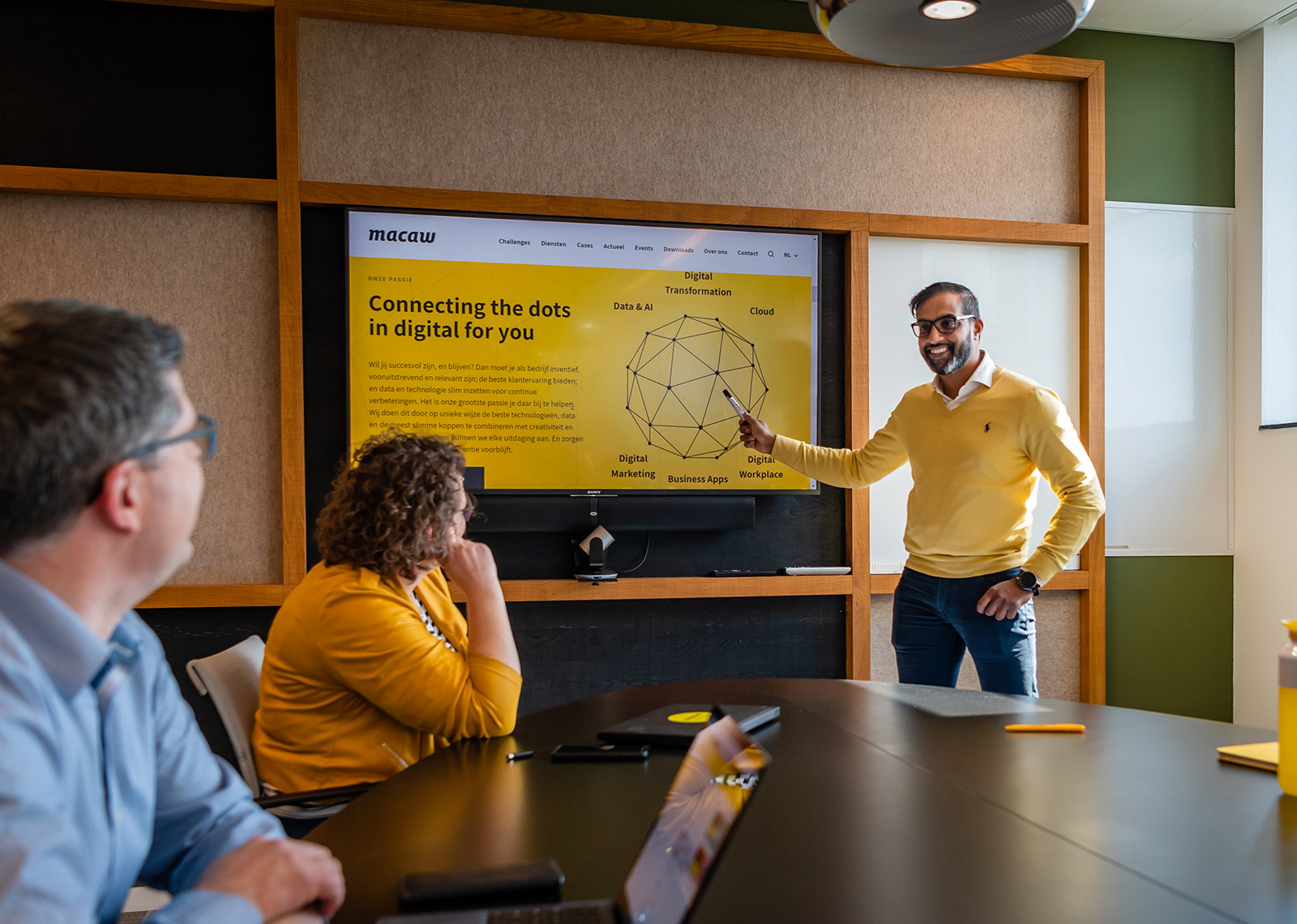We have just experienced the world’s greatest social experiment. Getting everyone to work from home instead of at the office has certainly proved successful. Finance companies have adapted their technological infrastructure at lightning speed, thanks to Covid-19. But this is only the beginning. In the years to come, we will have to start meeting the expectations of employees, which have now changed considerably.
We may not remember it now, but only a few years ago, the majority of companies saw no reason for online meetings and remote working. Executives couldn’t envisage these things happening, and as a result, technology was hardly used for this purpose. This was true even in finance and insurance, despite this sector being eminently suited to these new forms of working.
The triple peak workday
The need for employees to work from home has resulted in a dramatic change in their demands and expectations. Employees now expect their employers to facilitate remote working from home and provide a good and secure Internet connection. Flexible working hours have also been widely adopted. Microsoft has now observed a triple peak workday. Many video calls are held between 7:30 and 8 am, and shortly before and after the lunch break. This subsides in the afternoon, when employees take time to exercise, pick up their children from school or assume informal caregiving duties. A spike in keyboard activity occurs after six, when employees perform focus work during which they do not wish to be disturbed.
Employees expect their superiors to agree to these arrangements, but many companies in the financial sector are not yet ready for them. This applies to large companies in particular: they have relatively large numbers of middle management employees, and that’s precisely the group that struggles with remote working.
Understandably so: this group receives instructions from higher up that they must relay to their staff. At the same time, they’re expected to stay in contact with the people who had previously been on site. According to the Microsoft Work Trend Index, this group’s role is the one that changed most substantially during the coronavirus pandemic.
Three peak workday, Microsoft (2022)
Finance sector companies rely on retention
Moreover, the finance and insurance sector is heavily process and data-driven. At the same time, it relies on retaining staff. But the very processes – often outdated – that are in place are off-putting for employees. The tasks are frequently tedious and repetitive, such as entering the same data separately into multiple systems. Technology should take care of this procedural work to enable employees to refocus on their creativity. Yet a lack of suitable technology is in fact causing staff to leave. Another reason for staff departures is a lack of a proper connection with management. “Silent resignations”, when employees hand in their notice completely unexpectedly, is becoming more common.
How common is it for an insurance customer to have to enter or submit the same information multiple times? Often, insurers’ systems have failed to keep up with the times, and appear not to be interconnected. Staff are embarrassed by cumbersome processes over which they have no influence. Employees change jobs because they don’t feel emotionally connected, or because the technological arrangements are unsuited to them. This in turn becomes apparent in their environment: customers also notice that employees are not proud to be working for the company.
Younger people are looking for purpose
Besides this, the new generation has different needs. Whereas in the 1980s and 1990s, employees in the financial sector were primarily attracted by a good salary, today’s young people look for a purpose, and ask what the company is doing for society and the planet. But how do you transfer such a purpose to your staff when almost all of them work from home? The use of technology by HR is the answer. Software developers and HR are working more and more closely together, creating solutions focused on identity. HR systems are developing additional tools, such as intranet solutions and integration with Zoom and Teams. Technology has the capacity to create identification with the company on the part of the employee. This allows different branches of a company to keep each other up to date on their day-to-day operations or milestones. Their involvement with each other grows tremendously as a result. In addition, a tool such as Microsoft’s Viva Goals ensures that everyone in a company knows their own contribution to the company’s greater mission.
Emotional connection
These so-called employee experience solutions help companies to stand out. In the past, employees felt a bond to their employer because they ate in the cafeteria and spoke to their colleagues every day. Now, they often don’t see anyone beyond their own project team.
At the same time, working remotely is increasingly desired. Whereas in the past, people lived close to their place of work, the overstretched housing market is leading to people moving in greater numbers to outlying areas. But people don’t want to commute every day, either.
As a result, the digital component of the employee experience has become hugely important. Technology now has the function of generating identification with the company. The danger is that one company and the work done for it are indistinguishable from the next, and employees consequently have little reason not to change employer. Generating an emotional bond has become a greater challenge for staff in HR. Now consider making technology the solution: once you meet these challenges, you distinguish yourself from your competitors, enabling you to stay ahead and remain attractive to potential employees.
Would you like to learn more about technological changes in the workplace? If so, download our white paper on employee experience [link].
“‘Silent resignations’ komen steeds vaker voor, waarbij iemand plotseling vertrekt zonder dat iemand dat zag aankomen.”
This term seems to be used in English as a synonym of “quiet quitting”. It occurs when an employee is dissatisfied with their work and no longer sees any future prospects for themselves in the company.
The employee has not yet formally given notice to leave the company. However, there are two distinct aspects to this. One is that the employee may not express this dissatisfaction and may continue to work as normal, but has already come to terms with leaving the company, although they have not yet handed in their resignation. The other is that the employee shows no commitment to the job and does only the minimum work necessary.
The distinction in German between these two is clearer (“innere Kündigung” vs. “Dienst nach Vorschrift”). My impression is that in English, the distinction is less clear. The important thing in the context of this text though is not the term used, but that the meaning is then explained clearly.









